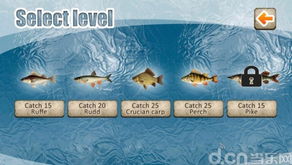
Content:
Fishing is a popular pastime that has been enjoyed by people of all ages for centuries. While many anglers prefer to use floats to detect when a fish has bitten, there are instances where fishing without floats can be both a challenge and a rewarding experience. In this article, we will discuss how to fish without floats and provide you with some valuable tips and techniques to help you become a proficient angler.
Understanding the Basics
Before we delve into the techniques, it's essential to understand the basics of fishing without floats. Without a float, you'll need to rely on other methods to detect when a fish has taken your bait. This can include watching for subtle movements in the line, feeling the tug on the rod, or observing the water for any disturbances.
Choosing the Right Bait
When fishing without floats, selecting the right bait is crucial. Live bait, such as worms, insects, or small fish, can be more effective as they tend to move naturally in the water and attract fish. Artificial lures, like jigs or spinners, can also work well, as they mimic the movements of real prey.
Using the Right Gear
To fish effectively without floats, you'll need the right gear. A good quality rod and reel are essential, as they will help you detect even the smallest movements in the line. A strong, sharp hook is also crucial, as it will ensure that you can securely land the fish once it bites.
Pay Attention to the Line
When fishing without floats, it's important to keep a close eye on your line. Even the slightest movement can indicate a fish bite. If you notice any sudden changes in the line, such as a sudden pull or a kink, it's a good indication that a fish has taken your bait.
Sensitivity and Patience
Fishing without floats requires a high level of sensitivity and patience. You'll need to be able to detect the subtle movements of the line and be prepared to set the hook quickly once you feel a bite. It's also essential to be patient and wait for the fish to take the bait, as rushing the process can lead to missed opportunities.
Practice Makes Perfect
Like any skill, fishing without floats takes practice. Spend time on the water, experimenting with different techniques and baits. Over time, you'll develop a better understanding of how to detect fish bites and become more proficient at fishing without floats.
Using a Strike Indicator
If you're struggling to detect fish bites, consider using a strike indicator. A strike indicator is a small, buoyant object that you attach to your line above your bait. When a fish takes your bait, the indicator will move, signaling a potential bite. While this isn't a traditional float, it can still be an effective tool for fishing without floats.
Adapt to the Conditions
Lastly, it's important to adapt your technique to the conditions. On windy days, you may need to use heavier line and heavier bait to ensure that your line stays in place. In clear water, you may need to be more subtle with your movements to avoid spooking the fish. By understanding the conditions and adapting your technique accordingly, you'll be more successful at fishing without floats.
In conclusion, fishing without floats can be a challenging but rewarding experience. By understanding the basics, choosing the right gear and bait, and developing a high level of sensitivity and patience, you'll be well on your way to becoming a proficient angler. Remember, practice makes perfect, so don't be afraid to experiment with different techniques and adapt to the conditions. Happy fishing!












